Northern Cardinal (original) (raw)
The Northern Cardinal is a mid-sized songbird, easily recognized by its vibrant cardinal-red plumage, especially in males. Native to North and South America, the Northern Cardinal is also known by other common names such as red cardinal, common cardinal, or redbird.
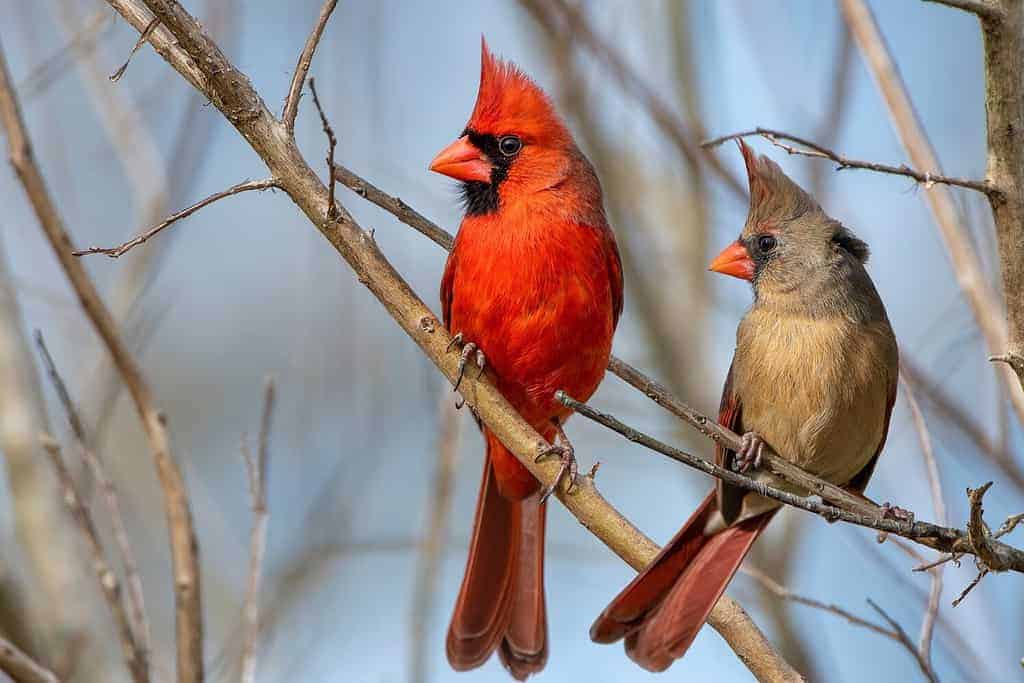
Northern Cardinals mate for life.
©Bonnie Taylor Barry/Shutterstock.com
Where To Find Northern Cardinals
Northern Cardinals inhabit various environments, including wetlands, shrublands, gardens, and woodlands. They are found throughout North and South America, ranging from the southern half of Maine and Minnesota to southern Canada, Mexico, northern Guatemala, and Belize. They have also been introduced to Bermuda, Hawaii, southern California, and southern Arizona.
Classification and Scientific Name
The Northern Cardinal belongs to the Cardinalidae family, which contains 14 genera, including the Cardinalis genus. There are three species in the Cardinalis genus, with Cardinalis cardinalis being the type species. The species is divided into 19 subspecies. The term ‘cardinal’ refers to the red plumage, reminiscent of the robes worn by Roman Catholic cardinals.
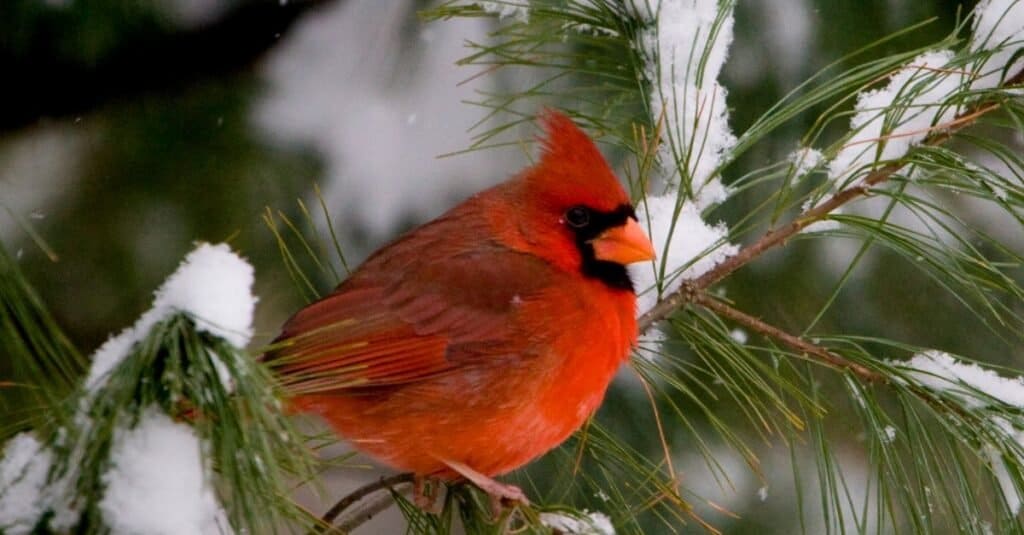
Male and female Northern Cardinals build nests together.
©iStock.com/BeyondMyLens
Size & Appearance
The Northern Cardinal is a mid-sized songbird, with males sporting bright, classic plumage while the females are olive-brown with red accents. Both sexes have a raised crest and a coral-colored beak. Adults typically measure 8.3 and 9.3 inches in body length, with a wingspan of 9.8 to 12.2 inches. Males are generally larger than females, with adults weighing between 1.19 and 2.29 ounces. Baby cardinals are born featherless with pink skin, and their plumage develops into a tan color before gradually shifting to mottled browns and soft reds as they mature. Their beaks are black and fade to a coral-red color as they grow into adulthood.
They do not migrate, and they don’t molt. Instead, they lose a few feathers at a time from their bodies and often lose all the feathers on their heads. Molting occurs during late summer through mid-autumn.
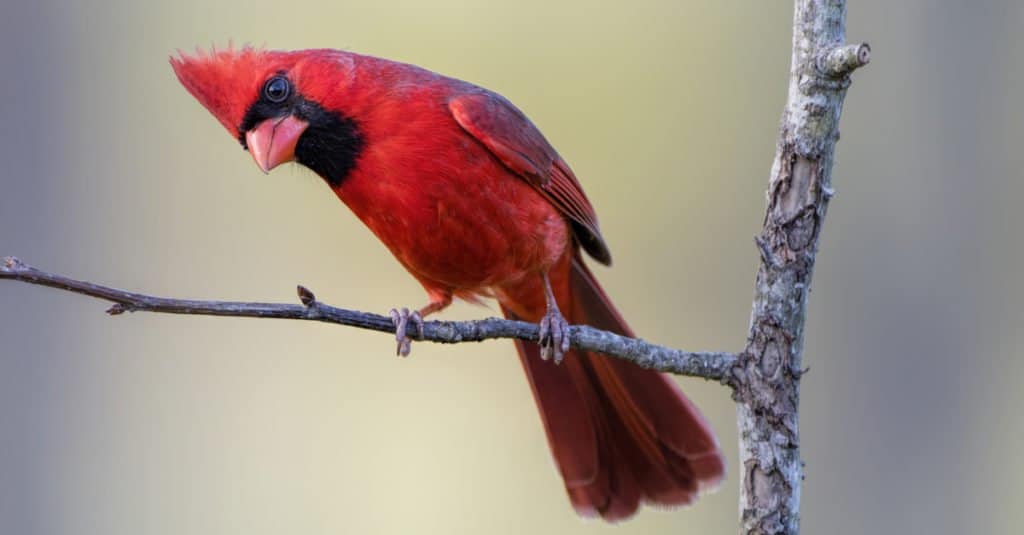
Northern Cardinals molt from late summer to mid-fall.
©Bonnie Taylor Barry/Shutterstock.com
Behavior
Northern Cardinals are known for their varied songs, with males using a high-pitched whistle to defend their territory. Both males and females have different-sounding calls due to hormonal differences, although indistinguishable from the human ear. The songs of Northern Cardinals vary based on geographic location, and both sexes learn their songs.
Males are territorial, and one of their calls is a clear, high whistle from high up in a tree to defend its territory. Their songs consist of clear whistles in repeating patterns at first, which become varied. They also make short chirp sounds as warning calls against predators or for a pair to locate each other.
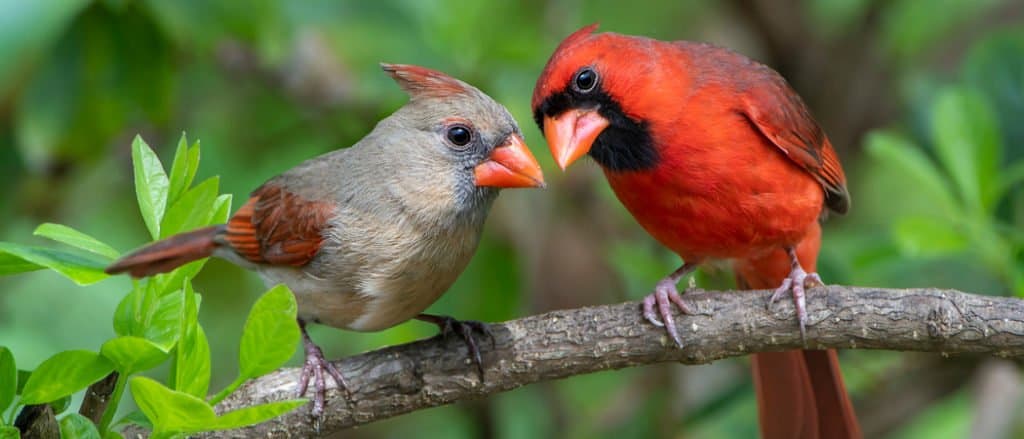
Male and female sing songs to each other.
©Bonnie Taylor Barry/Shutterstock.com
Diet
Northern Cardinals are omnivorous, feeding on seeds, grains, fruits, and insects. They also forage for insects such as cutworms, grasshoppers, caterpillars, termites, and beetles, using their strong beaks to dig through the ground and bushes.
Predators and Threats
Because the Northern Cardinal looks for food on the ground and it has bright colors, other animals can easily see it. The search for food leaves it vulnerable to predators, especially birds of prey like eagles and owls, and even more so during the winter because of its stark contrast with snow. Other birds of prey that hunt Northern Cardinals are hawks, falcons, and shrikes. Snakes and domestic cats also hunt them. Even squirrels and chipmunks can kill them, as can crashing into windows. Predators of eggs and chicks are domestic cats, chipmunks, squirrels, crows, blue jays, and snakes.
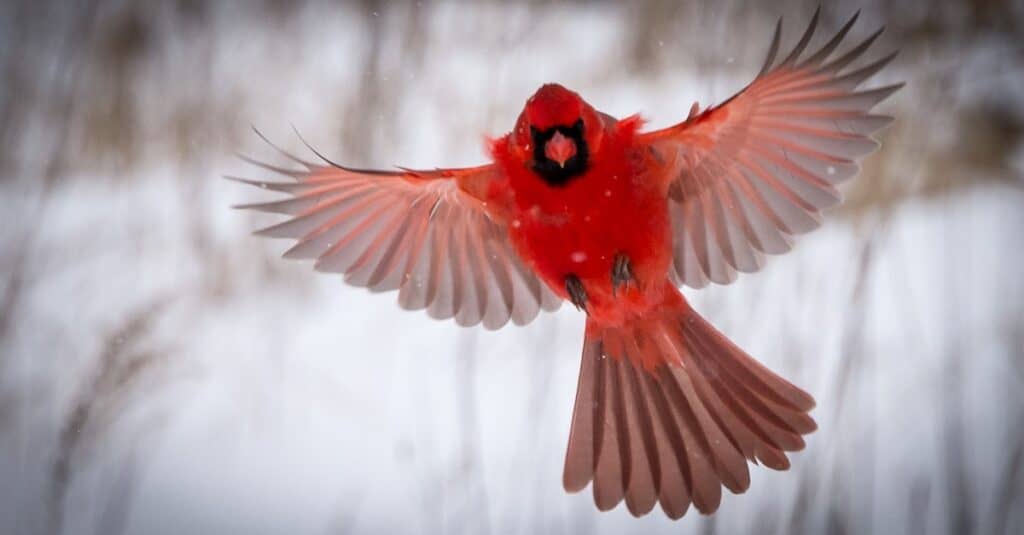
Northern Cardinals’ bright plumage makes them rather conspicuous to predators such as eagles, falcons, hawks, and owls.
©iStock.com/Lynnae_Lowe
Nesting
Cardinals build their nests in dense shrubs and low trees about 3.3-9.8 feet off the ground. The female builds the nest mainly, with the male providing nesting material. The nest has a cup shape and comprises four layers of coarse twigs, sometimes with pieces of trash, grapevine bark lining, pine needles, rootlets, stems, and grasses. It takes three to nine days to build, with the completed nest measuring 2-3 inches in height, 4 inches across, and an inner diameter of about 3 inches. The pair usually uses the nest only once.
Reproduction, Babies, and Lifespan
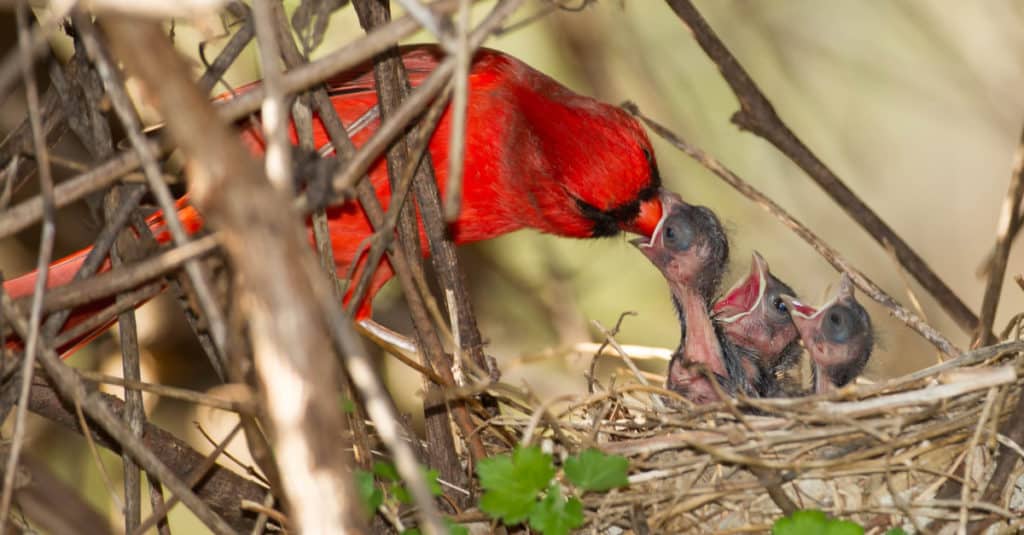
Northern Cardinals both care for their eggs and their young with males responsible for feeding hatchlings.
©Agnieszka Bacal/Shutterstock.com
Mating season for Northern Cardinals begins as early as January and ends as late as September. They usually mate for life, although they may have other mates between seasons, and when their mate dies, they find another one. Males feed females to bond with them and also provide nesting materials. They sing together before nesting.
Females lay eggs one to six days after completing the nest, with a clutch size of three or four eggs each time and two to four broods each year, with the first brood around March and the second between May and July. The eggs are white-tinted brown, blue, or green, with brown, grey, or lavender blotches which get thicker at the larger end. Their shells are smooth and somewhat glossy and measure 1.02 x 0.75 inches in size. Females do most of the incubation, with males incubating briefly on rare occasions, for 12 to 13 days. While the females incubate the next clutch, males feed and care for the existing brood.
The bird reaches sexual maturity at 1 year, while its lifespan is an average of 3 years in the wild. Each year, 40 percent die and many juvenile birds don’t live to adulthood, often only living about a year. The oldest wild cardinal was 15 years old, but in captivity, the oldest cardinal was 28.5 years old.
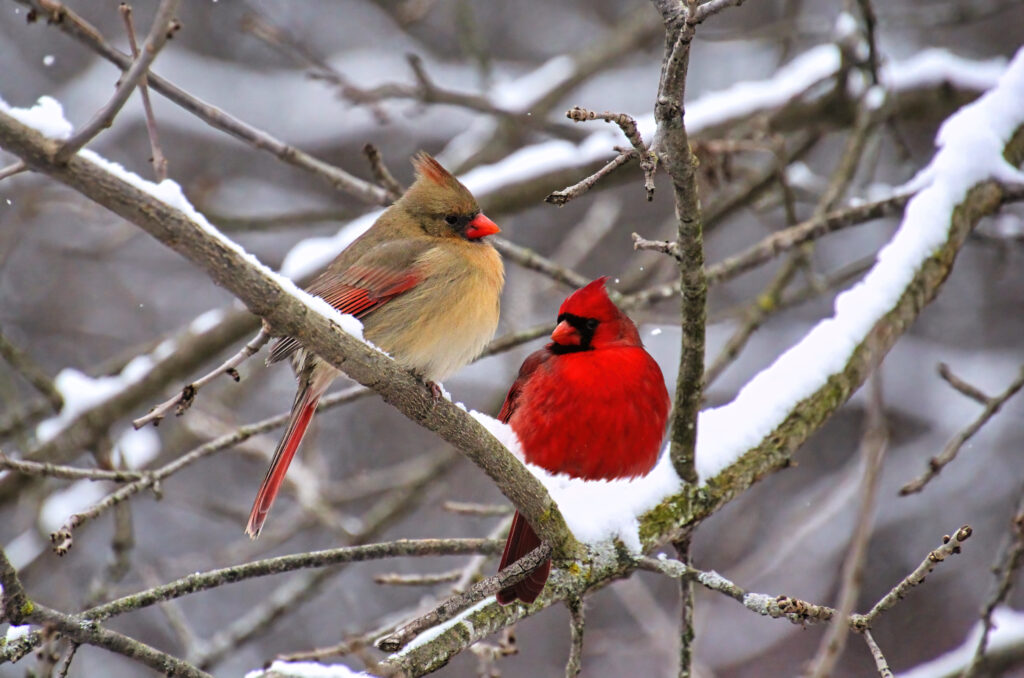
Seven U.S. states have chosen the Northern Cardinal as their official state bird.
©iStock.com/Hongkun Wang
Population
According to the known facts about the bird, the Northern Cardinal is not endangered or threatened, but it can encounter many outdoor hazards. The IUCN Red List states its population is stable and listed as Least Concern.
View all 85 animals that start with N
Seeing any red cardinal symbolizes a ray of hope and represents good luck and new beginnings.
The geographical range in which they are found.
It has several calls: “cheer, cheer, cheer, what, what, what, what,” , “purdy, purdy, purdy…whoit, whoit, whoit, whoit”, “cheeeer-a-dote, cheeer-a-dote-dote-dote,” and “what-cheer, what-cheer… wheet, wheet, wheet, wheet.”
19-37mph with an average of 25mph.